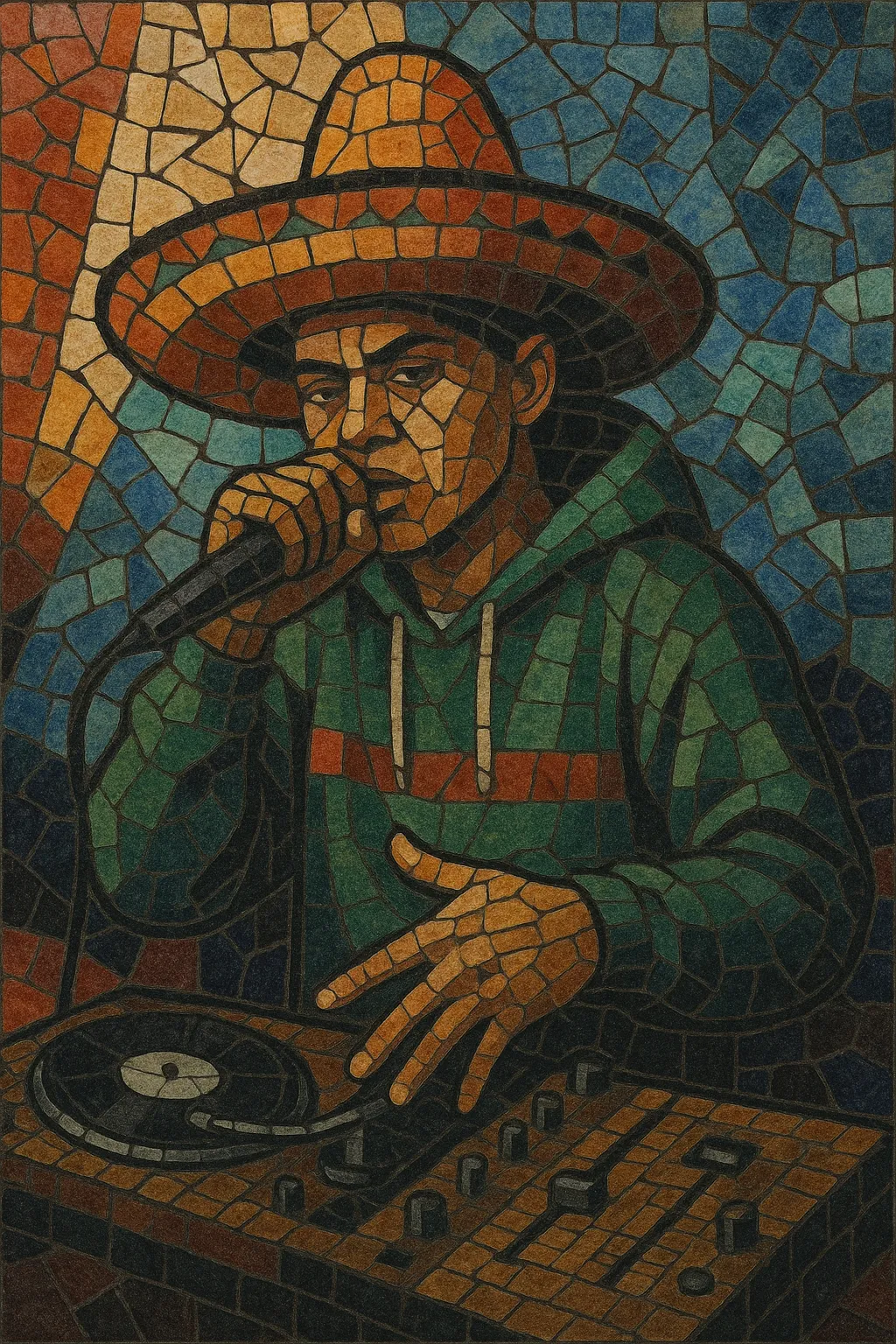Mexican hip hop is the localized expression of hip hop culture in Mexico, blending classic rap foundations with regional musical colors and Spanish-language lyricism. It encompasses MCing, DJing, graffiti, and breakdance, but its recorded output is defined by gritty storytelling, street realism, wordplay, and a mix of boom-bap, G-funk, trap, and hybrid beats.
Stylistically, it often incorporates rhythmic and melodic ideas from regional Mexican idioms and Latin genres—occasionally sampling or referencing cumbia, norteño, banda, or mariachi—while maintaining core hip hop traits like punchy drums, bass-forward mixes, and bar-centric flows. The scene ranges from hardcore and battle-rap aesthetics to radio-friendly hooks and crossovers with rock and regional styles.
Hip hop culture entered Mexico through border exchange with the United States, media, and migrant communities. Early adopters embraced breakdance, graffiti, and DJ culture in urban centers like Mexico City, Monterrey, and Guadalajara. The sonic template drew heavily from U.S. boom-bap, West Coast gangsta rap, and G-funk, filtered through Spanish-language delivery and local realities.
The genre reached national consciousness in the mid–late 1990s. Control Machete’s debut (1996) became a watershed moment, proving Spanish-language rap from Mexico could achieve mainstream impact. Monterrey’s broader alternative surge (often associated with the "Avanzada Regia" movement) provided infrastructure and visibility for rap acts, DJs, and producers. Independent labels, pirate radio, and street markets helped spread mixtapes and compilations.
In the 2000s, crews and solo acts consolidated regional scenes. Cartel de Santa built a large following with raw, street-level narratives, while Mexican-American groups like Kinto Sol bridged Mexico and the U.S. Midwest, reflecting migration, identity, and bicultural life. Production evolved from strict boom-bap toward cleaner, bass-heavy mixes, while collaborations with rock and alternative acts expanded the audience.
YouTube and streaming platforms catalyzed a new generation: Alemán, C-Kan, Gera MX, Santa Fe Klan, and others scaled rapidly with consistent singles, videos, and collaborations. Freestyle/battle circuits (and figures like Aczino) elevated technical standards and public interest. Simultaneously, rap intermingled with regional Mexican music, paving the way for hybrid movements—most notably corridos tumbados and later electro corridos—where trap/hip hop rhythms, flows, and aesthetics mesh with corrido storytelling and instrumentation. Today, Mexican hip hop spans underground lyricism, chart-minded hooks, and cross-genre experiments while retaining its emphasis on narrative authenticity.


